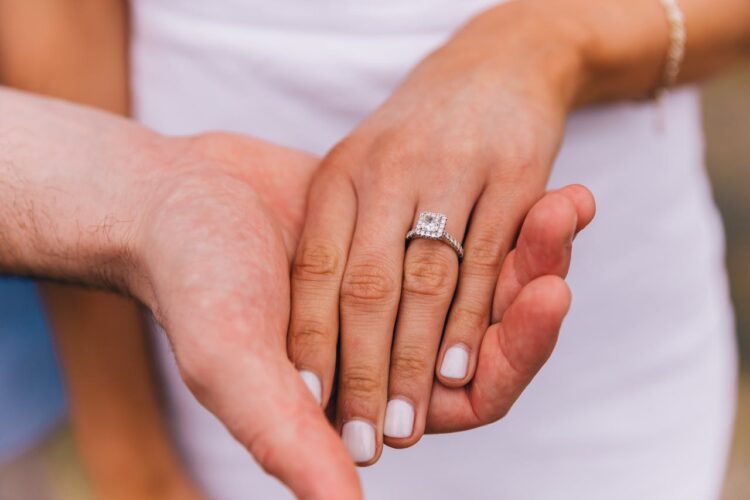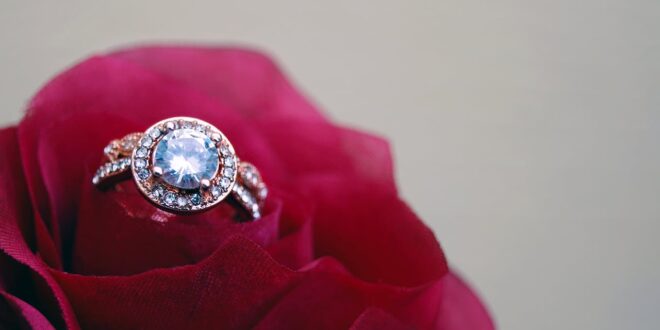Engagement rings, symbols of love and commitment, have traversed a fascinating journey through history. From ancient times to the modern era, the design of engagement rings has evolved significantly, reflecting changes in fashion and shifts in cultural values, economic conditions, and technological advancements.
This exploration into the evolution of engagement ring designs will show how these cherished symbols of romance have transformed over the centuries.
The Birth of the Engagement Ring Tradition
The tradition of engagement rings dates back to Ancient Egypt, where rings were believed to symbolize eternity due to their circular shape. These rings were often made of materials like hemp or reeds. On the other hand, the Ancient Romans are credited with giving engagement rings as a promise of marriage. Initially, these rings were iron bands, symbolizing strength and permanence. It wasn’t until the 2nd century B.C. that gold rings began to appear, indicating a shift towards ornamentation and aesthetic value in engagement ring designs.
In medieval times, engagement rings became more intricately designed, often featuring engravings and other decorative elements. However, the use of precious stones in engagement rings was not widespread until much later. During the Renaissance, diamonds started appearing in these rings, albeit primarily among the aristocracy due to their rarity and cost.
Visit this Auckland engagement ring store to witness a modern reflection of these historical designs, where each piece tells its own story.

Diamonds on Richmond Owners, Michael and Michelle
The Diamond Era and Beyond
The discovery of diamond mines in South Africa in the late 19th century marked a turning point in engagement ring history. Diamonds, once the exclusive reserve of the elite, became more accessible. The 20th century saw a significant increase in the popularity of diamond engagement rings. The Art Deco period, particularly, was influential in shaping engagement ring designs, introducing geometric shapes and vibrant color contrasts.
After World War II, engagement rings symbolized a commitment to marry and a sign of financial security and stability. The designs became more elaborate, emphasizing larger diamonds and intricate settings. The late 20th and early 21st centuries have seen a diversification in engagement ring styles. While the classic solitaire diamond ring remains popular, there has been a growing trend toward unique and personalized designs, including different gemstones, mixed metals, and vintage-inspired styles.
Sustainability and Ethical Sourcing

In recent years, the jewelry industry has significantly shifted towards sustainability and ethical sourcing. This change is reflected in engagement ring designs, with an increasing number of couples opting for ethically sourced diamonds or alternative stones. Lab-grown diamonds have also risen in popularity, offering a more sustainable and affordable option without compromising aesthetic appeal.
Conclusion ─ A Symbol Evolving with Time
The evolution of engagement ring designs mirrors the changes in our society, values, and technology. From simple iron bands to elaborate diamond settings, these rings have continuously adapted to the times while maintaining their core symbolism of love and commitment. As we move forward, the trends in engagement ring designs are likely to keep evolving, blending tradition with innovation, and reflecting the ever-changing narrative of love and partnership.
Whether you are drawn to the classic elegance of a solitaire diamond or the unique charm of a vintage-inspired design, an engagement ring is more than just a piece of jewelry. It’s a testament to a personal story, a symbol of a journey embarked upon together, and a piece of history in its own right. As we continue to witness the evolution of these exquisite symbols of commitment, one thing remains constant: their ability to encapsulate the timeless and enduring nature of love.
 Hi Boox Popular Magazine 2024
Hi Boox Popular Magazine 2024



